Everything You Need to Know About Web Hosting Bandwidth

Whether you’re about to start a website or you already have one but you don’t quite understand all there is about hosting, you could be wondering about a little thing called web hosting bandwidth.
Bandwidth can be defined as the amount of data you’re able to transfer to your visitors in a specific unit of time. It is expressed in gigabytes (GB) or megabytes (MB) per second, and it typically varies depending on the type of hosting package. Many hosting providers offer unlimited bandwidth, but that’s a feature that usually reflects in the package price, as well, and is an important factor in choosing a hosting provider. Because big or unlimited bandwidth is generally pricey, you may be having questions about whether you need it or not. In this article, we’re going to explain all there is about bandwidth and hopefully help you pick a package that fits your needs the best. Here’s what we’ll talk about:
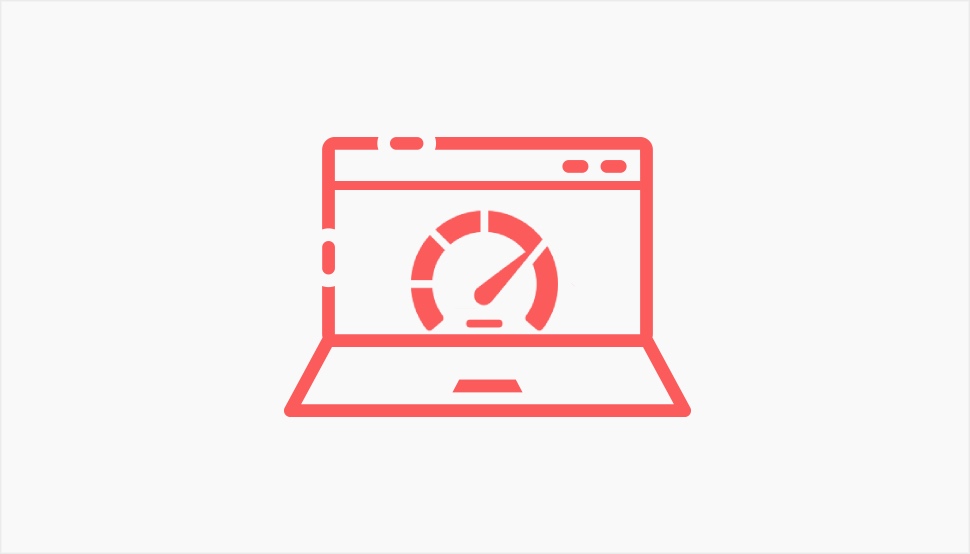
As we mentioned in the introduction, web hosting bandwidth represents the amount of data that can be transferred in a unit of time. In web hosting, we’re talking about the transfer between a website, a user and a server. It is expressed as MB/s or GB/s.
It’s important to understand the distinction between bandwidth and data transfer. With bandwidth, we’re talking about the rate of transfer – the amount per unit of time, usually MB per second or GB per second. With transfer, we’re only referring to the actual amount of data alone.
Web hosting bandwidth can be compared to a pipe or a hose. With a small hose, it will take longer for an amount of water to be poured out. If you have a larger hose, you are able to pour out more water faster.
It’s the same with web traffic. Lower bandwidth means slower transfer and, logically, higher bandwidth means faster transfer, faster page loading, file uploading and downloading.
You may have noticed that some websites take longer to load compared to the others that you’re visiting with the same internet connection. This is because some websites have hosting plans with lower bandwidth and are therefore not able to serve the data to the visitors as fast as other websites, with higher bandwidth.
Why Does Bandwidth Matter?
There are several reasons why you’d want to make sure your website has enough bandwidth for its needs:
-
It allows you to create media-rich pages. Websites that don’t have sufficient bandwidth can’t include a lot of videos, images and animations. If you plan on creating a media-rich website, you have to make sure it has enough bandwidth.
-
It allows for traffic growth. When you start a website, most likely your goal is to have as many visitors as possible. You may start with 1000 per month but that doesn’t mean it won’t hit 10,000 per month soon – and you need bandwidth that can sustain it.
-
More bandwidth means more pageviews for your visitors. This is particularly important for dynamic websites that frequently publish new posts, or shops with regular updates of product pages, and so on.
It all boils down to this – you need to have an appropriate amount of bandwidth in order to successfully run a rich and frequently visited website.
It’s clear that bandwidth is among the most important features of a hosting package. Bandwidth is usually capped in free hosting plans, while managed hosting plans often offer several tiers, including plans with unlimited bandwidth.
What Is Unlimited Bandwidth?
Here’s the deal: there is no such thing as unlimited bandwidth. There’s also no such thing as unlimited storage, but that’s not our subject here. No provider can offer zero cap on bandwidth, but that doesn’t stop them from advertising their plans “with unlimited bandwidth.” We see it quite often and it’s a completely normal thing among hosting providers.
This is because for most of them it’s simpler to say it’s “unlimited” than to explain the actual caps to unsavvy customers in plans that do offer bandwidth so high it’s limit can’t really be exceeded by most normal websites.
In short, unlimited bandwidth may be a misnomer, but it does mean you will get so much bandwidth it will appear to be limitless.
To see how much bandwidth your website has, you need to log into your hosting account’s dashboard. Each provider has its own dashboard interface so there’s no single path to follow, but in the case of our WordPress managed hosting, the dashboard looks something like this:
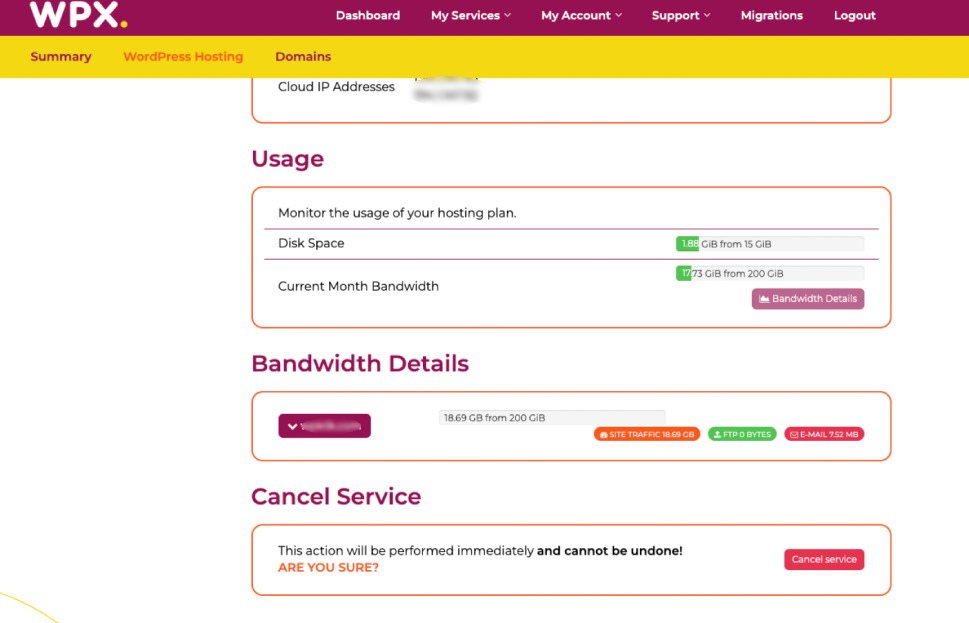
After logging in, we clicked on WordPress Hosting, which took us to a screen where we can check out disk space and monthly bandwidth usage, as well as bandwidth details.
The path will probably be quite similar in your dashboard – simply look for Bandwidth in the menu and that’s where you’ll find all the deets.
You can also check your bandwidth (and in great detail, too) by logging into your server’s cPanel. Scroll down to Metrics, and then click on Bandwidth.
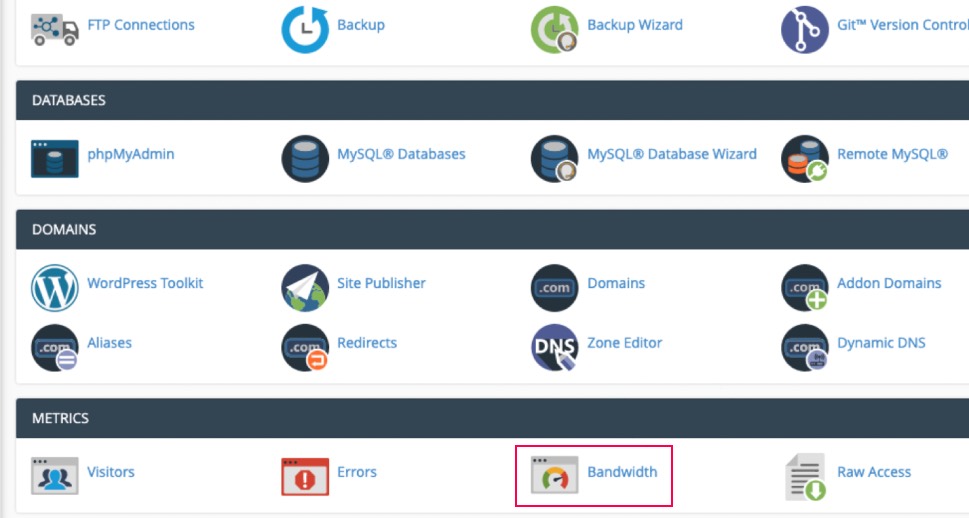
Here, you can check the bandwidth in the past 24 hours, in the past week and the past year.
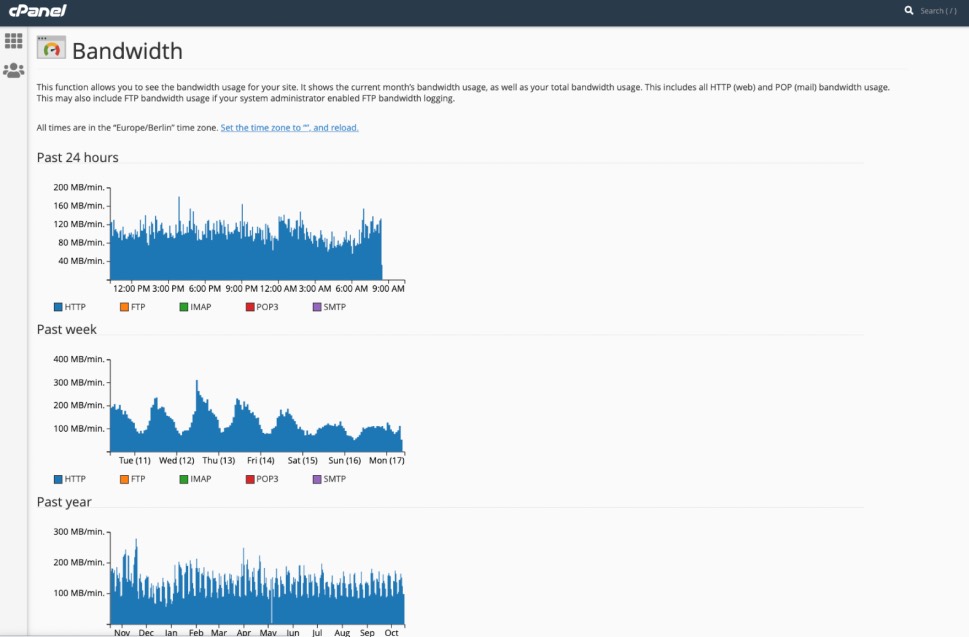
Obviously, the answer to this question will depend on the type and size of your website, and the amount of traffic you expect. Small personal blogs without much media can do with less, while big, media-heavy websites that have a huge daily traffic with expected sudden peaks will need more.
When buying a hosting plan, it’s not a good idea to buy more than you need. More bandwidth usually comes in packages that offer more of everything – more disk space, for instance. If you don’t need more, simply don’t get more. Instead, try to find a provider that offers scalable solutions. As for buying packages with bandwidth that is too low, well, that one is simple – don’t do it. You wouldn’t buy size 7 shoes if you’re a size 9, would you? Your needs simply won’t fit.
But how to tell how much bandwidth you need if you’re only just starting and have no previous experience? There’s a formula you could use.
Take the average page size in KB and multiply it by the average monthly number of users (or your expected number of users, if you don’t have the metrics yet). Now multiply that by the average number of pageviews per visitor.
You can get these numbers by using an online tool like Pingdom.
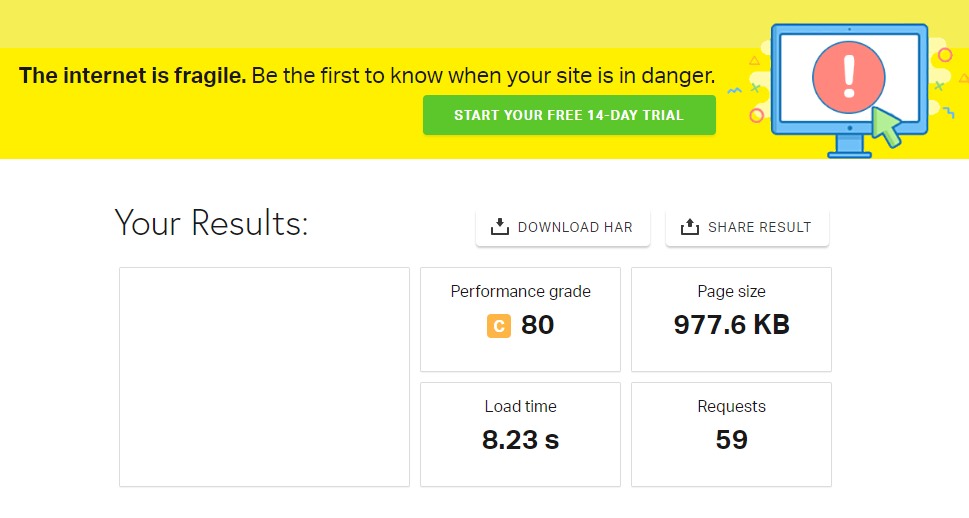
As for the traffic (the number of visitors and pageviews) you should always consult Google Analytics, on which we have an extensive tutorial.
Let’s try with an example. If your website has an average of 7,000 visits per month, each visitor opens three pages on average and your pages are approximately 1.5 MB in size, then:
7,000 x 3 x 1.5 = 31.5 MB/month (you can round it up to 32.)
This formula should give you a solid idea on the bandwidth range you should be aiming for. Also make sure to leave some extra room for traffic spikes – about 50% will probably do.

If you already have a hosting plan that you can’t or don’t want to change right now, and the plan doesn’t cover your bandwidth needs, there are things you can do to reduce your need for high bandwidth.
You can start by optimizing your images. Image and video files require more bandwidth than plain text pages, and by compressing them you can make them smaller and easier to load. Don’t worry, you don’t have to do it manually – there are many great image compression plugins you can use for this purpose.
Also, enabling compression from JavaScript, CSS and HTML can help significantly. For this, you will need a caching plugin.
Serving the content to your visitors from a server that is nearest to them could also help. You can store your static content on a Content Delivery Network (CDN), a solution that can help with a number of performance and speed issues. If you’re unsure where to start, check out our guide to the best CDN services for WordPress.
Wrapping It Up
Web hosting bandwidth is an important factor to consider when choosing a hosting provider. If you’re only just starting and don’t have hosting yet, try to estimate the amount of traffic you can expect in the beginning but don’t forget about scaling. You need hosting that is scalable, i.e. hosting that leaves enough room for your website to grow.
If you already have a package that doesn’t fit your bandwidth needs, if your website is slow to load and your traffic is starting to suffer, then it’s probably time to change the plan, perhaps even the provider.
Be wary of “unlimited bandwidth,” though. As we explained, bandwidth cannot possibly be unlimited and there’s always a cap. Talk to the hosting provider and ask them what the cap actually is, and then compare it to your website’s bandwidth needs. For most “regular” websites with moderate traffic, no sharp spikes and a reasonable number of pages, the cap will provide enough bandwidth.



